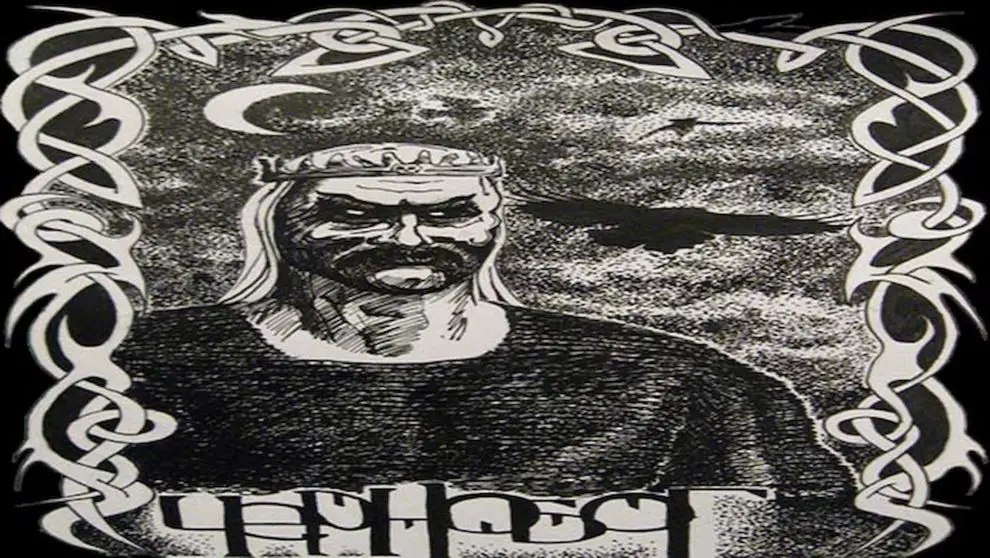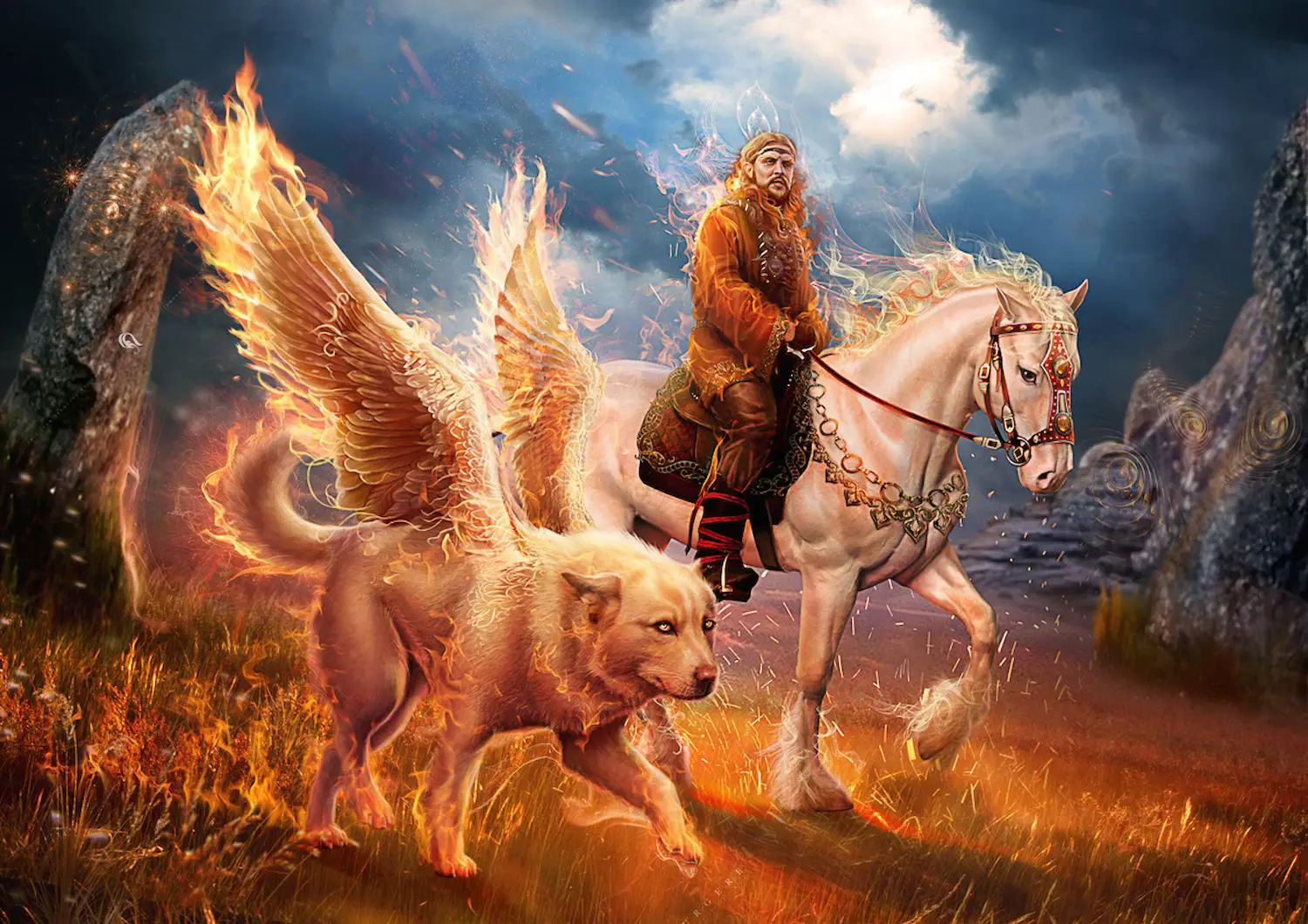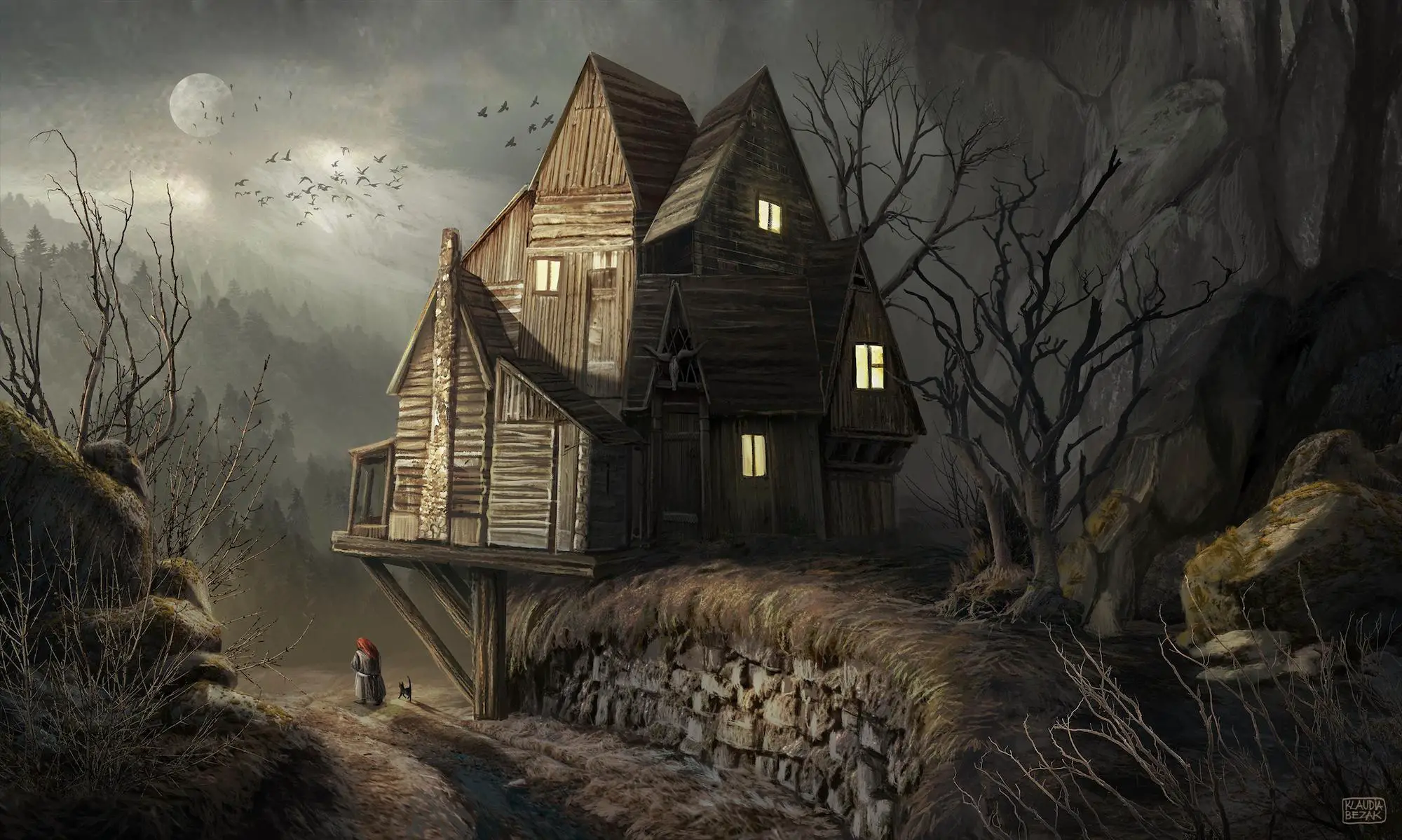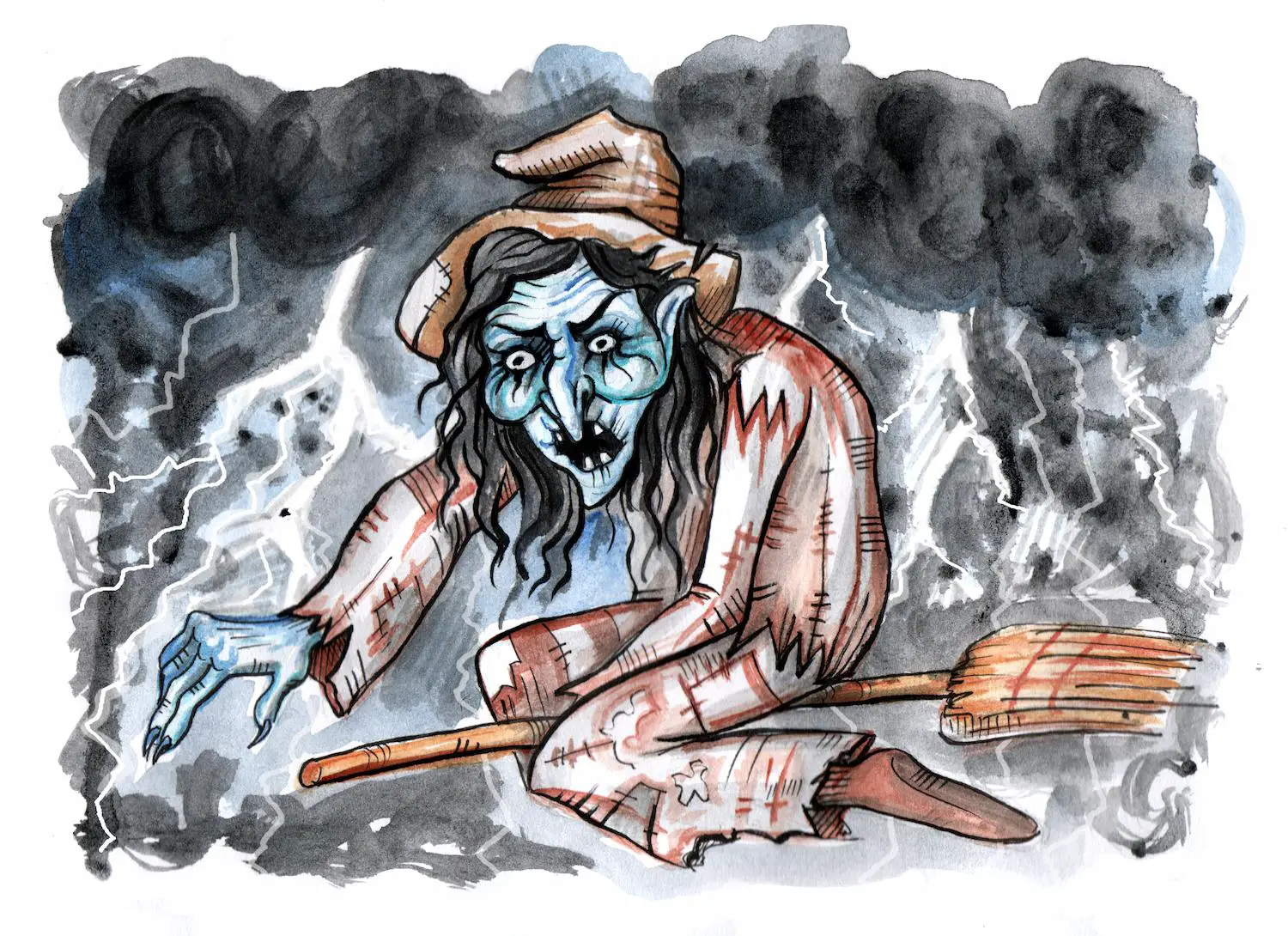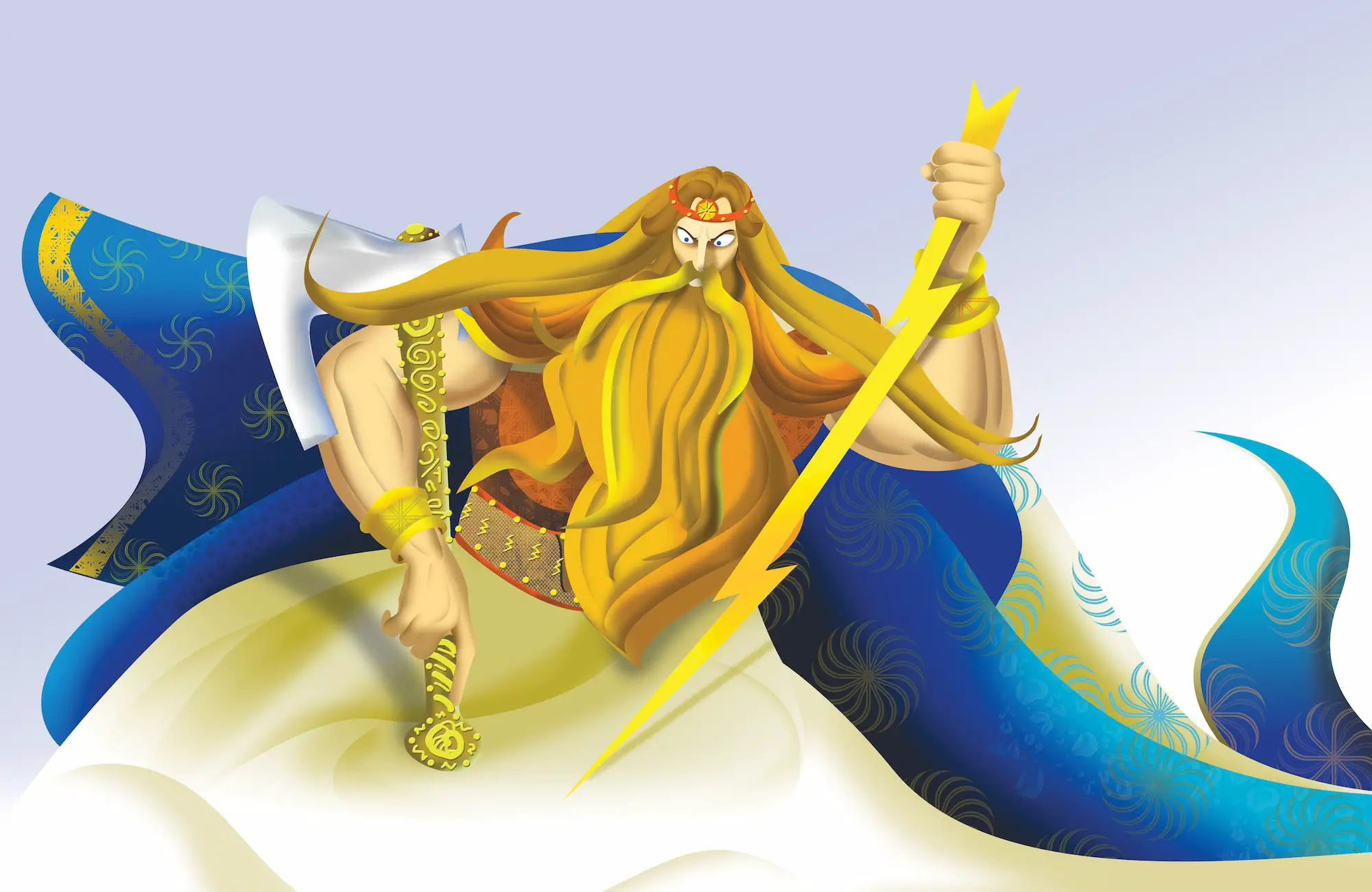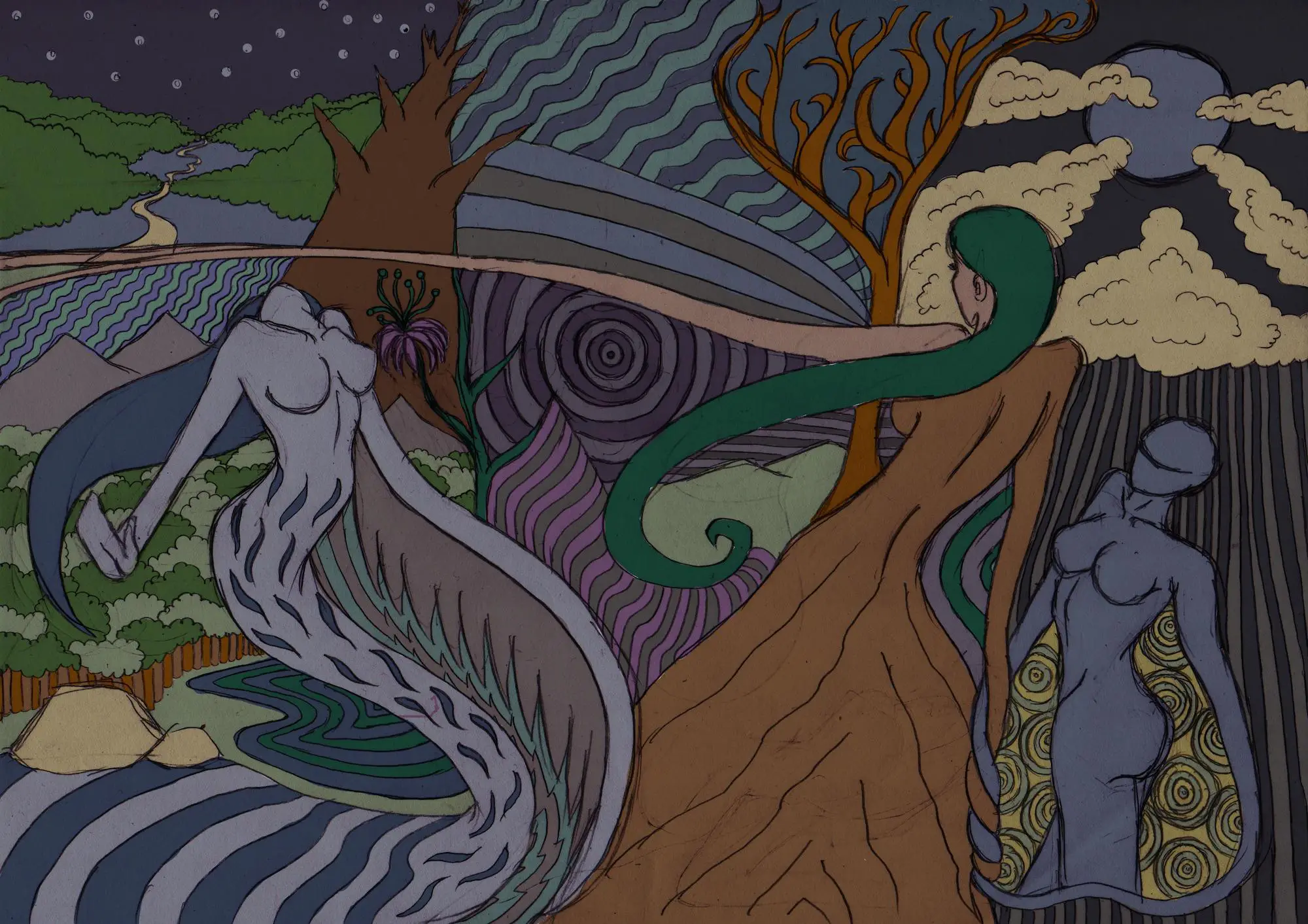Crnobog, also known as Chernobog or Zcerneboch, literally translates to “Black God”.
He was the villain, the bad god that was worshipped and feared by the ancient Slavs.
Because of his notorious reputation, the Dark God is one of the most popular Slavic gods in the world and is quite often used as a reference in pop culture (mostly in Slavic countries).
He is the main villain in many fiction books, fairytales, animated films, video games, etc.
Table of Contents
The Myth of Crnobog
Crnobog was considered the god of night, evil, and ultimate chaos.
The Slavs believed that all the evil in the world originated from this god! Some folklorists have noted that this god was actually called upon during cursing rituals.
Events and conditions such as famine, illness, barren harvest, or extreme cold would be interpreted as misfortune and Crnobog was considered responsible for these unfavorable occurrences.
The darkness and the cold during fall and wintertime were considered big misfortunes and as natural phenomena, they had to be someone’s fault.
Therefore, Crnobog, (or as some versions call it Cert), became a winter deity and the god of darkness that was imagined as a monstrous creature that shut out the light in the world and covered it with darkness.
Despite the fact that the god was presented as an evil deity he was nonetheless honored and respected by the Slavs just like the other god.
Crnobog is not classified as a deity of lower rank in any source of Slavic mythology and his impact as a deity was considered essential and he was regarded as equal to the other gods in the pantheon.
The myth of Crnobog reveals that ancient Slavs believed that accidents and misfortunes were also caused by the gods.
Extreme cold, death, disease, and famine were considered divine events that had to be respected.
This proves the pagan divergence of interpretation of misfortune when compared with Christianity since Christianity regards life on earth as a place in the “vale of tears” and does not imagine it as a divine bestowal
Crnobog and his Beloved Sedunja
According to the author and folk researcher Vladimir Aleksejevic Istrahov, Crnobog also had a life companion, the she-goat named Sedunja with whom he had the son called Vij.
This legend is associated with the Christian period when horned animals were considered a personification of evil forces.
Crnobog vs. Belobog
The Slavic religion had no dualism characteristics, however, the research of Crnobog is quite frequently noted in context to an opposite deity and that is the god called Belobog (belo means white).
Belobog is presented as a principle of goodness and light, positioned against Crnobog with strong power to counterbalance his stark negative impact.
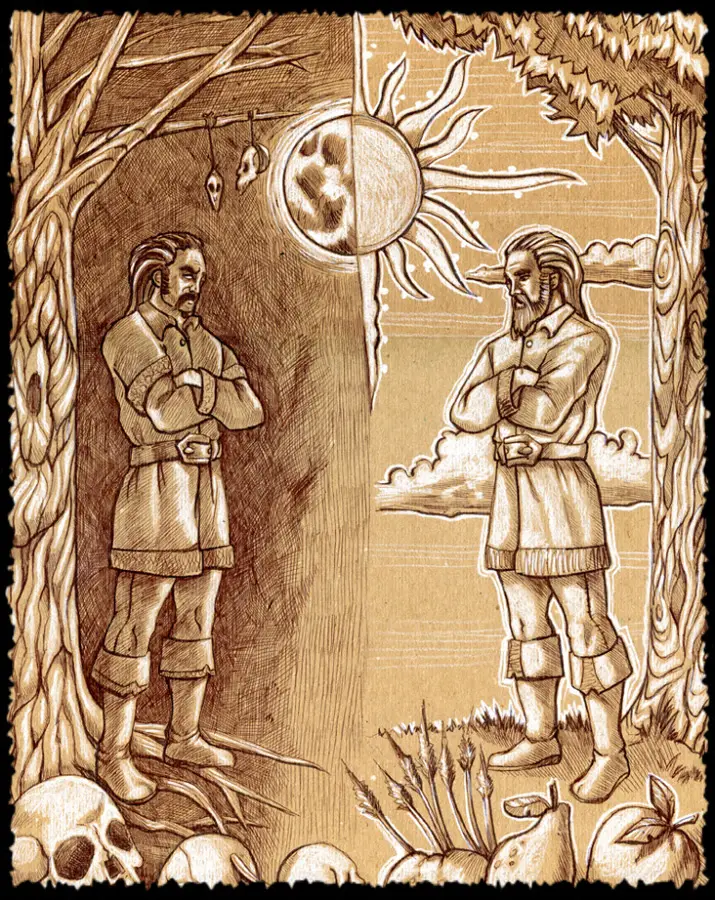
Researchers have found places whose names can be related to Belobog, such as Belbuch in Pomerania, Belobozice in Bohemia, and Bialoboze and Bialoboznica in Poland.
However, the theory of Belobog cannot be officially confirmed as some historians claim that the name is not present in any authentic written document of Slavic culture.
Some Slavic myths, such as the myth of creation, mention Belobog but there are no proofs that these were created in the period before Christianity was imposed [1].
However, it should be mentioned that pagan religions are not based on dualism but polytheism. That fact does not support the idea of only one primordial cause but many of them.
The Slavic Myth of World Creation
The Slavs believed that the world was created by the gods Crnobog and Belobog who joined together and made a perfect creation, i.e. the world.
While they were creating the world, the gods entered into a conflict, and their views, ideas and actions created the opposition in the earthly world.
The god of darkness, Crnobog owned the dark half of the year, while Belobog ruled the sunny half.
According to ancient belief, the rule of Belobog began with the winter solstice while the rule of Crnobog started with the summer solstice.
The winter solstice was the day of the battle of the two opposed deities and on this day, it was Belobog who would always win [2].
Historical Sources and References of the Myth
Cernobog is first mentioned in the book “Chronica Slavorum” by the German monk and chronicler Helmold of Bosau.
In the 16th century, other sources appeared which examined the myth of Cernobog and his counterpart Bielobog.
In 1530, the Dominican monk Johan Lindner wrote about Slavic deities in his text compilation. However, his work was not based on field research but on written stories and other sources so historians concluded it as unreliable and uncritical.
At the end of the 17th century, the historian Abraham Frencel researched paganism in the region of Lusatia- a historical region in Central Europe, between Germany and Poland.
Crnobog and Slavic Paganism
In the early 16th century, the chronicler Thomas Kantzow also wrote about Crnobog, explaining that he writes about the Slavic faithlessness and idolatry, as he says, in which the pagan tribes had engaged before the time of the German Empire.
The German cartographer and cosmographer, Sebastian Munster also recorded his findings of the Slavic honoring of the deity Crnobog, saying that, in general, Slavic tribes adored two gods “Belbuck and Zernebuck” and they presented them as a white and a black god, as a good one and a bad one.
Crnobog also appeared in the anonymous book “History of Caminensis”, described as the god of the Vandals, the Germanic people who first inhabited what is today known as modern Poland.
The Bottom Line
We’ve talked about the Black god, and the influence he had on the history and culture of the Slavic people.
If you would like to learn more about Slavic mythology, visit this page.
Sources
- https://www.academia.edu/10255821/Slavic_mythology
- https://www.researchgate.net/publication/280977337_Slavic_and_Greek-Roman_Mythology_Comparative_Mythology







